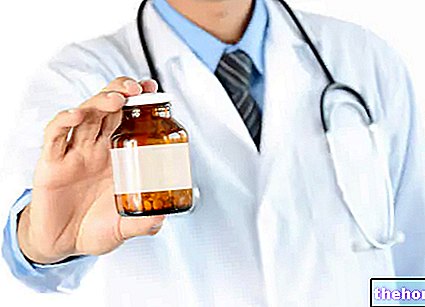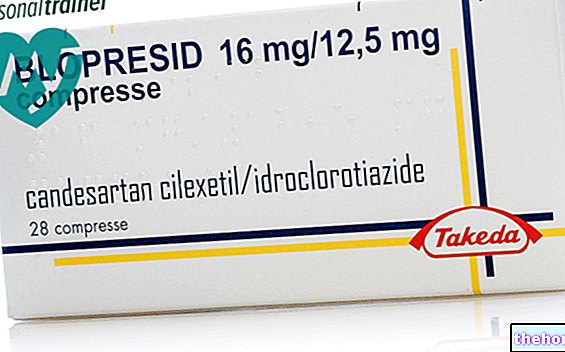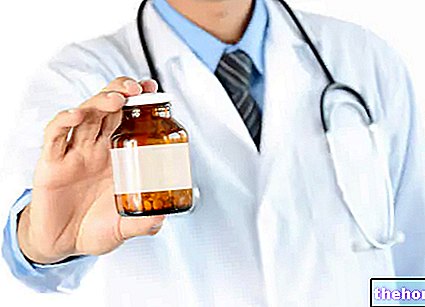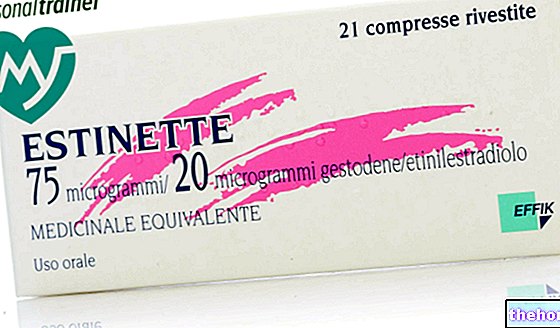Active ingredients: Hydrocortisone (Hydrocortisone acetate), Amyline, Benzocaine, Aesculin, Benzalkonium chloride
Proctosedyl suppositories
Proctosedyl package inserts are available for pack sizes:- Proctosedyl suppositories
- Proctosedyl rectal cream
Why is Proctosedyl used? What is it for?
Proctosedyl is an antihemorrhoid for local use, based on corticosteroids (group of anti-inflammatory drugs).
Proctosedyl is used to treat symptoms of internal or external hemorrhoids, especially in the inflammatory stages. Anal itching.
Contraindications When Proctosedyl should not be used
Do not use Proctosedyl
- if you are allergic to hydrocortisone acetate, benzocaine, aesculin, benzalkonium chloride or any of the other ingredients of this medicine
- if you are allergic to other anesthetics with a chemical structure similar to benzocaine and to substances containing the para group (sulfonamides, promethazine, etc.).
- if you have tuberculous and viral infections in the area to be treated.
Precautions for use What you need to know before taking Proctosedyl
Talk to your doctor or pharmacist before using Proctosedyl.
Use with appropriate caution in subjects with damaged mucous membranes that could cause excessive absorption of the active ingredients.
Corticosteroids can be applied to infected areas only if preceded or accompanied by a suitable antibacterial or antifungal therapy. In case of failure of the therapy it is necessary to suspend the treatment and adequately treat the infection with other measures.
Warning: Use the lowest effective dosage.
Clinical cases suggest that the administration of benzocaine-containing products may cause methemoglobinemia (increased level of methemoglobin in the blood) referable to excessive absorption of benzocaine, particularly in children and the elderly. Symptoms such as cyanosis (paleness, greyish or bluish discoloration of the skin, lips and nails), headache, lightheadedness, dyspnoea (difficulty in breathing), fatigue and tachycardia that occur during treatment may indicate potentially dangerous methemoglobinaemia. patient's life (see also "If you use more Proctosedyl than you should"). If you notice any of these symptoms tell your doctor immediately or go to the nearest hospital.
The local application of cortisone drugs in excessive doses and for prolonged periods can cause generalized reactions from systemic absorption (Cushing's syndrome, inhibition of the pituitary-adrenal axis [the adrenal gland may be temporarily unable to produce adequate amounts of cortisol at the time of suspension] ). Therefore, once a favorable clinical effect has been obtained, it is necessary to minimize the frequency of application and the dosage, discontinuing the product as soon as possible. It is in any case necessary to limit the local use of steroids to short periods of time.
Anti-doping test
For those who carry out sporting activities: the use of the drug without medical necessity constitutes doping and can lead to a positive doping test
Interactions Which drugs or foods can modify the effect of Proctosedyl
Tell your doctor or pharmacist if you are taking, have recently taken or might take any other medicines.
There are no known medicines that can modify the effect of the medicine.
Warnings It is important to know that:
Pregnancy and breastfeeding
If you are pregnant or breast-feeding, think you may be pregnant or are planning to have a baby, ask your doctor or pharmacist for advice before using this medicine.
During pregnancy or breastfeeding Proctosedyl should only be used after consulting your doctor and evaluating with him the risk / benefit ratio in your case.
Dosage and method of use How to use Proctosedyl: Dosage
Always use this medicine exactly as described in this leaflet or as directed by your doctor or pharmacist.
If in doubt, consult your doctor or pharmacist. Rectal use.
Remove the suppository from the wrapper before use.
The recommended dose is 1-2 suppositories a day.
Warning: use only for short periods of treatment.
Overdose What to do if you have taken too much Proctosedyl
In case of accidental overdose of Proctosedyl, notify your doctor immediately or go to the nearest hospital.
Symptoms due to an excess of corticosteroids are characterized by asthenia (weakness), adynamia (lack of strength), high blood pressure, edema, heart rhythm disturbances, hypokalaemia (lack of potassium in the blood), metabolic alkalosis (high presence of bicarbonate in the blood).
Clinical cases suggest that the administration of products containing benzocaine may cause methemoglobinemia (increased level of methemoglobin in the blood). Symptoms such as cyanosis (paleness, greyish or bluish discoloration of the skin, lips and nails), headache, lightheadedness, dyspnoea (difficulty in breathing), fatigue and tachycardia that occur during treatment may indicate potentially dangerous methemoglobinaemia. life of the patient and require immediate medical attention.
In addition to supportive care, the recommended treatment includes intravenous infusion of methylene blue.
If you have any further questions on the use of this medicine, ask your doctor or pharmacist
Side Effects What are the side effects of Proctosedyl
Like all medicines, this medicine can cause side effects, although not everybody gets them.
These effects generally disappear after a short time, however if you have any of the following symptoms you should contact your doctor or pharmacist: - local allergic reactions presenting with edema, redness and itching
Compliance with the instructions contained in the package leaflet reduces the risk of undesirable effects.
Reporting of side effects
If you get any side effects, talk to your doctor or pharmacist. This includes any possible side effects not listed in this leaflet. You can also report side effects directly via the national reporting system https://www.aifa.gov.it/content/segnalazioni-reazioni-avverse
By reporting side effects you can help provide more information on the safety of this medicine.
Expiry and Retention
Keep this medicine out of the sight and reach of children.
Do not use this medicine after the expiry date which is stated on the package. The expiry date refers to the last day of that month.
The expiry date indicated refers to the product in intact packaging, correctly stored.
Do not throw any medicines via wastewater or household waste. Ask your pharmacist how to throw away medicines you no longer use. This will help protect the environment.
What Proctosedyl contains
Each suppository contains:
The active ingredients are: 5 mg hydrocortisone acetate, 50 mg benzocaine, 10 mg aesculin, 0.1 mg benzalkonium chloride.
The other ingredients are: medium chain glycerides, solid semisynthetic glycerides (Witepsol E85, Witepsol H15
Description of what Proctosedyl looks like and contents of the pack
Proctosedyl suppositories comes in a box containing 6 suppositories
Source Package Leaflet: AIFA (Italian Medicines Agency). Content published in January 2016. The information present may not be up-to-date.
To have access to the most up-to-date version, it is advisable to access the AIFA (Italian Medicines Agency) website. Disclaimer and useful information.
01.0 NAME OF THE MEDICINAL PRODUCT
PROCTOSEDYL
02.0 QUALITATIVE AND QUANTITATIVE COMPOSITION
Proctosedyl rectal cream
100 g of rectal cream contain: 1 g hydrocortisone acetate, 1 g amyline, 1 g benzocaine, 1 g aesculin, 5 mg benzalkonium chloride.
Proctosedyl suppositories
Each suppository contains: 5 mg hydrocortisone acetate, 50 mg benzocaine, 10 mg aesculin, 0.1 mg benzalkonium chloride.
For the full list of excipients, see section 6.1.
03.0 PHARMACEUTICAL FORM
Rectal cream.
Suppository.
04.0 CLINICAL INFORMATION
04.1 Therapeutic indications
Symptomatic treatment of hemorrhoids, internal or external, especially in the inflammatory phases. Anal itching.
04.2 Posology and method of administration
Rectal cream
For endorectal and perianal applications. Apply the ointment 2 times a day in acute forms; subsequently space out the applications, according to the evolution of the symptoms.
Suppositories
1-2 suppositories a day.
Use only for short periods of treatment
04.3 Contraindications
Hypersensitivity to the active ingredients or to any of the excipients and in particular to benzocaine (and other anesthetics with a similar chemical structure) and to substances containing the para group (sulfonamides, promethazine, etc.); tuberculous and viral infections of the area to be treated.
04.4 Special warnings and appropriate precautions for use
Use the lowest effective dosage. Clinical cases suggest that the administration of products containing benzocaine may cause methemoglobinemia attributable to excessive absorption of benzocaine, particularly in children and the elderly. Symptoms such as cyanosis (paleness, greyish or bluish discoloration of the skin, lips and nail bed), headache, lightheadedness, dyspnoea (wheezing), fatigue and tachycardia that occur during treatment may indicate potentially life-threatening methaemoglobinaemia. patient and require immediate medical attention (see section 4.9).
The topical application of corticosteroids in excessive doses and for prolonged periods can give rise to generalized reactions to systemic absorption (Cushing's syndrome, inhibition of the pituitary-adrenal axis).
Therefore, once a favorable clinical effect has been obtained, it is necessary to minimize the frequency of application and the dosage, discontinuing the product as soon as possible. It is in any case necessary to limit the use of topical steroids to short periods of time.
Also use with appropriate caution in subjects with damaged mucous membranes that could cause excessive absorption of the active ingredients.
Corticosteroids can be applied to infected areas only if preceded or accompanied by a suitable antibacterial or antifungal therapy. In case of failure of the therapy it is necessary to suspend the treatment and adequately treat the infection with other measures.
04.5 Interactions with other medicinal products and other forms of interaction
No interaction studies have been performed.
04.6 Pregnancy and lactation
During pregnancy and / or breastfeeding, the medicine should only be used if necessary, after evaluating the expected benefit to the mother in relation to the possible risk to the fetus.
04.7 Effects on ability to drive and use machines
Proctosedyl does not affect the ability to drive or use machines.
04.8 Undesirable effects
Adverse effects are categorized according to MedDRA System and Organ terminology.
General disorders and administration site conditions
Hypersensitivity reactions with edema, redness, itching may occur locally.
Reporting of suspected adverse reactions
Reporting of suspected adverse reactions occurring after authorization of the medicinal product is important as it allows continuous monitoring of the benefit / risk balance of the medicinal product. Healthcare professionals are asked to report any suspected adverse reactions via the national reporting system. "Italian Medicines Agency.
Website: www.agenziafarmaco.gov.it/it/responsabili.
04.9 Overdose
The phenomena of corticosteroid excess are characterized by asthenia, adynamia, arterial hypertension, edema, heart rhythm disturbances, hypokalemia, metabolic alkalosis.
Clinical cases suggest that the administration of products containing benzocaine may cause methemoglobinemia.
Symptoms such as cyanosis (paleness, greyish or bluish discoloration of the skin, lips and nail bed), headache, lightheadedness, dyspnoea (wheezing), fatigue and tachycardia that occur during treatment may indicate potentially life-threatening methaemoglobinaemia. patient and require immediate medical attention.
In addition to supportive care, the recommended treatment includes intravenous infusion of methylene blue.
05.0 PHARMACOLOGICAL PROPERTIES
05.1 Pharmacodynamic properties
Pharmacotherapeutic group: antihemorrhoids for topical use; corticosteroid-based product.
ATC code: C05AA.
Proctosedyl contains hydrocortisone acetate, a corticosteroid with anti-inflammatory and vasoconstrictive activity. Corticosteroids reduce inflammation both by reducing vascular permeability and edema and by intervening in a complex way against chemical mediators and cells that participate in the inflammatory reaction.
In the proctological field, they find useful use, especially in the treatment of inflammatory complications of hemorrhoids, where they determine a sedative effect on pain, itching and other local symptoms.
The action of hydrocortisone is integrated by the presence in the product of local anesthetics and esculin.
05.2 Pharmacokinetic properties
Rectal absorption is variable, but can be accentuated in the presence of inflamed or seriously damaged mucous membranes.
05.3 Preclinical safety data
There is no information from preclinical data of relevant importance to the physician that has not already been reported in the other sections of the Summary of Product Characteristics.
06.0 PHARMACEUTICAL INFORMATION
06.1 Excipients
Rectal cream
cholesterin, liquid paraffin, macrogol 300, macrogol 1540, macrogol 4000, polysorbate 80, propylene glycol, talc, white petroleum jelly, purified water.
Suppositories
medium chain glycerides, solid semisithetic glycerides (Witepsol E85, Witepsol H15).
06.2 Incompatibility
Not relevant.
06.3 Period of validity
Cream:
24 months.
After first opening: 4 weeks.
Suppositories:
24 months.
06.4 Special precautions for storage
This medicine does not require any special storage conditions.
06.5 Nature of the immediate packaging and contents of the package
Rectal cream
20 g aluminum tube in cardboard box.
Suppositories
Opaque white PVC strip in cardboard box.
Pack of 6 suppositories.
06.6 Instructions for use and handling
No special instructions.
Unused medicine and waste derived from this medicine must be disposed of in accordance with local regulations.
07.0 MARKETING AUTHORIZATION HOLDER
Bayer S.p.A. Viale Certosa 130, 20156 Milan
08.0 MARKETING AUTHORIZATION NUMBER
"Rectal cream" tube 20 g AIC n ° 013868031
"Suppositories" 6 suppositories AIC n ° 013868043
09.0 DATE OF FIRST AUTHORIZATION OR RENEWAL OF THE AUTHORIZATION
Renewal: 1-June 2010
10.0 DATE OF REVISION OF THE TEXT
AIFA determination: July 2015




























